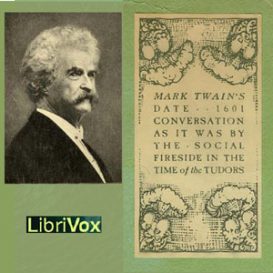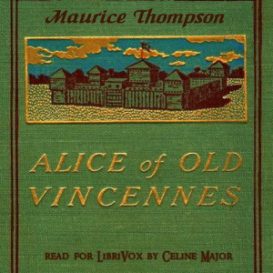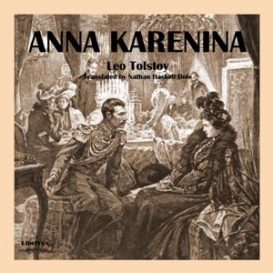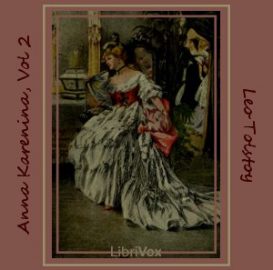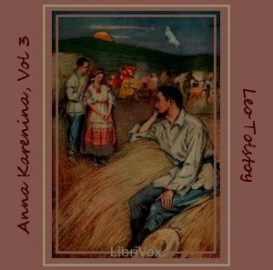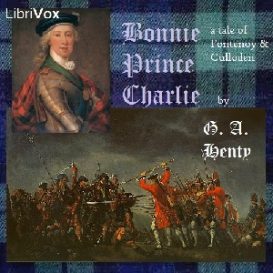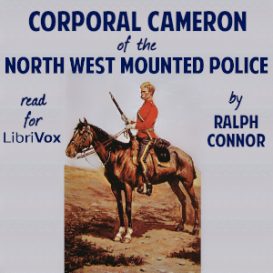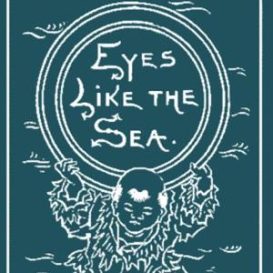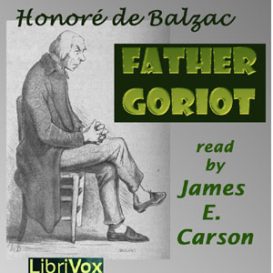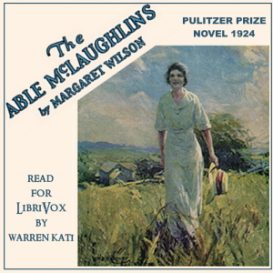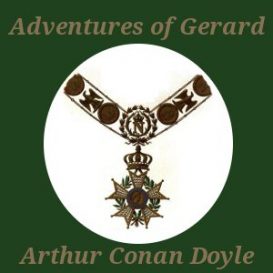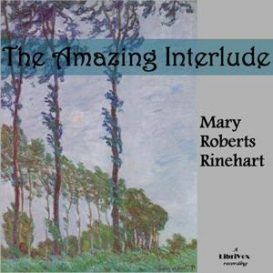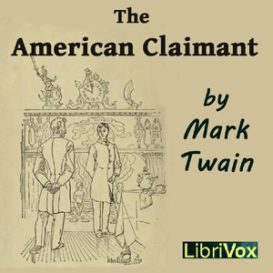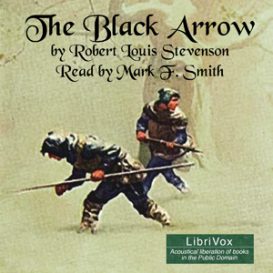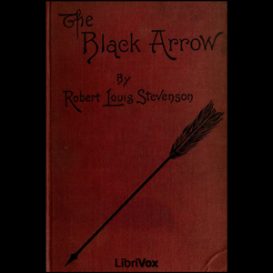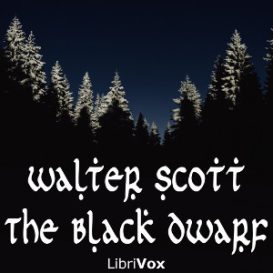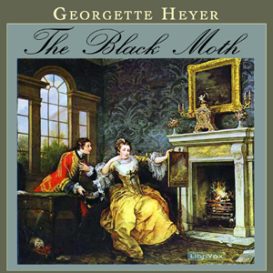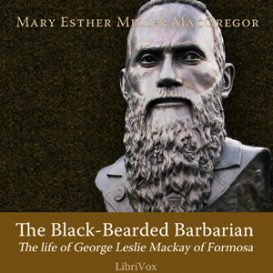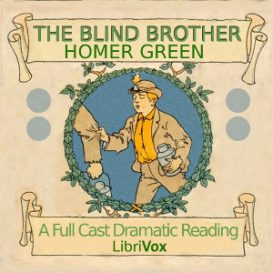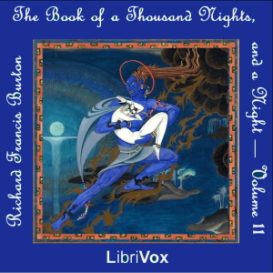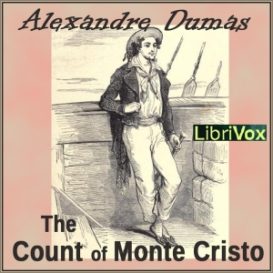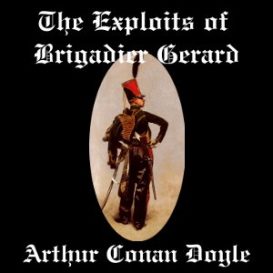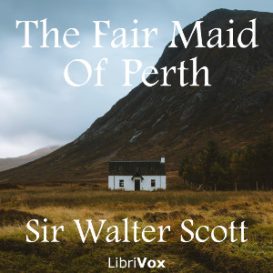Historical Fiction
Showing all 47 results
”Mr Rowl”
Raoul des Sabli?res, a French parole prisoner in England during the Napoleonic Wars, becomes enmeshed in a complicated tangle where his honour conflicts with his parole, and is sent to prison. Juliana Forrest, for whose sake he broke his parole, does her utmost to save him, and in his adventures and misfortunes, Raoul eventually also finds help from an unlikely source. This is a fun adventure story and romance, written in a style similar to Georgette Heyer. (Summary by Elin) – Summary by Elin
‘Tilda Jane
When spunky ‘Tilda Jane isn’t allowed to keep her beloved dog with her at the orphanage, she decides to set out on her own in search of a home where the inseparable pair will be accepted. Throughout her weary travels she encounters many people, both rich and poor, kind and cantankerous — but will she ever find family? Set in the Canadian wilderness and coast of Maine, ‘Tilda Jane is a story of true grit, forgiveness, and unlikely friendship. (Summary by Twinkle)
1601: Conversation, as it was by the Social Fireside, in the Time of the Tudors (Version 2)
Please note: this recording contains strong language. Also known simply as “1601”, this is a humorously risque work by Mark Twain, first published anonymously in 1880, and finally acknowledged by the author in 1906. (Summary by John Greenman & Wikipedia)
Alice of Old Vincennes
This entertaining book of adventure, love and war was a Bestseller in 1900 and 1901. The heroine Alice Roussillon is a brave young woman who grew up in a small town on the Wabash River in Indiana during the revolutionary war. The characters are all distinctive and compelling. It gives a great insight into the frontier life of that era and includes true historical accounts and personages such as the wicked Lieutenant Governor Henry Hamilton and George Rogers Clarke who was responsible for expelling the British from Fort Sackville in Vincennes in 1779. From the foreword: ” “Accept, then, this book, which to those who care only for history will seem but an idle romance, while to the lovers of romance it may look strangely like the mustiest history.” – Summary by Celine Major
Among Malay Pirates : a Tale of Adventure and Peril
G. A . Henty was a prolific writer of historical fiction for young adults. In this collection of shorter stories we visit Malay pirates, have a couple of tales of India, a shipwreck off the Channel Islands and a bursting dam in California, and finish off escaping from captivity in China (Summary by annise)
Anna Karenina (Dole translation)
Two love stories are set against the backdrop of high society in Tsarist Russia. Anna awakes from a loveless marriage to find herself drawn irresistibly to the dashing cavalry officer, Count Vronsky. Levin struggles with self-esteem, and even flees to the country, before gaining courage to return and offer himself to the beautiful and pure Kitty. Through troubled courtships, reconciliations, marriage and the birth of each one?s first child, Anna and Levin experience joy and despair as they each struggle to find their place in the world and meaning for their lives. (Introduction by MaryAnn)
Anna Karenina, Book 1
Anna Karenina tells of the doomed love affair between the sensuous and rebellious Anna and the dashing officer, Count Vronsky. Tragedy unfolds as Anna rejects her passionless marriage to follow her heart and must endure the hypocrisies of society. (Summary by Mary Anderson)
Anna Karenina, Book 2
In Part 2, Kitty?s health deteriorates from regret and heartbreak, while Levin retreats to his country estate. Anna and Vronsky continue to pursue each other and become the talk of polite society, to the chagrin of Karenin. (Summary by Mary Ann )
Anna Karenina, Book 3
Anna Karenina tells of the doomed love affair between the sensuous and rebellious Anna and the dashing officer, Count Vronsky. Tragedy unfolds as Anna rejects her passionless marriage to follow her heart and must endure the hypocrisies of society. (Summary by Mary Anderson)
Bonaventure, A Prose Pastoral of Acadian Louisiana
This is a gentle, delightful story of life and love on the bayoux of Acadian Louisiana during the latter half of the 19th century. Bonaventure is a Creole raised among the Acadians. He loves learning, and through his calling as a teacher, and his own unique force of character, comes to have a lasting effect on the people around him. A word of warning: This story has occasional references to Jews and African Americans that the modern mind finds offensive. They are retained here in the interest of preserving the original text. (Summary by Christine Dufour)
Bonnie Prince Charlie: a Tale of Fontenoy and Culloden
This is a tale of the son of a Scottish officer, who gets arrested for helping a Jacobite agent. Set during the Jacobite rebellion in Scotland in 1755, the boy escapes and makes it to France and shares some adventures with Prince Charlie. – Summary by Ann Boulais
Conjuror’s House, a Romance of the Free Forest
In the northern outreaches of the Canadian wilderness, it was understood that the Hudson Bay Company governed all trading, and one factor named Galen Albret took his position seriously. Free traders, or those who dared try to do their trading outside of the Company, found themselves having to face Galen Albret and his methods of dealing with them. One or two offenses he might tolerate, but for those who repeatedly refuse to acknowledge his warning out, he would send them on ?La Longue Traverse? through the wilderness without supplies, and from which they seldom returned. Ned Trent was one such free trader who defied both the Company and Galen Albret. The defining difference between Ned and the other free traders however, was his youth, energy, and good looks, which the Factor?s daughter did not fail to recognize. What follows the initial confrontations between Ned, Galen Albret, and his daughter Virginia makes for a thrilling tale of adventure, daring, survival, and romance. Conjuror?s House was twice made into silent films titled ?The Call of the North?, the first being Cecil B. DeMille?s first film in which he received solo directorial credit, and the second starring Noah Beery and Jack Holt (whose face was the basis for the face of Dick Tracy). (Summary by Roger Melin)
Consuelo
This roman ? clef follows the musical adventures of Consuelo, a gifted singer under the tutelage of the composer Nicola Porpora. After encountering betrayal in her home city of Venice, she goes to stay with a family of nobles in an isolated castle in Bohemia and teach singing to the baroness who lives there. It is there that she meets Count Albert, a troubled young man who experiences regressions to past lives. He is strangely drawn to her, but she, though moved with pity for him, is unsure what to think of him. She then sets out for Vienna to meet with Porpora again and on the way befriends a young Joseph Haydn. The two do their best to skirt intrigue and peril during their journey while Consuelo engages in soul-searching to determine who Count Albert is to her. (Summary by Scarbo)
Corporal Cameron of the North West Mounted Police – A Tale of the Macleod Trail
Cameron, a young man from Edinburgh, is a university student who is a rising star on the football team. When the big day comes and he nearly fails his team, he doubts he’ll ever be good for anything ever again. Things soon take a turn downward and Cameron is forced to face the fact that his only option may be leaving all he’s ever known and going to Canada for a new start. Summary by Adele de Pignerolles
Eyes Like the Sea
He was a painter, a poet, a novelist. He lived during the Hungarian revolution and his love of freedom meant his life was often in peril. She was his first love, this girl with the eyes like the sea. She was at heart noble, good and loving. What an excellent lady might have been made out of this woman, if she had only met with a husband who, in the most ordinary acceptance of the word, had been a good fellow, as is really the case with about nine men out of every ten. But she always managed to draw the unlucky tenth out of the urn of destiny. And so she spurned his true love in favor of a high-flying dandy. He went on to pursue a life of politics and she to follow her capricious heart. But yet, throughout her life, she kept returning to him and to the end, of all men, she loved him perhaps best of all. (Eyes Like the Sea won the Hungarian Academy of Sciences prize for literature in 1890.) (Summary by MaryAnn)
Fabiola or The Church of the Catacombs
This historical novel is set in Rome in the early 4th century AD, during the time of the cruel persecution of Christians under the Emperor Diocletian. The heroine of the book is Fabiola, a young pagan beauty from a noble Roman family. Fabiola seems to have everything, including a superior education in the philosophers, yet under the surface, she is not content with her life. One day, in a fit of rage, she attacks and wounds her slave girl Syra, who is a secret Christian. The proud, spoiled Roman girl is humbled by Syra’s humility, maturity and devotion to her in this situation, and a slow transformation begins. Woven into this fictitious story are a number of martyrdom accounts of real-life Christian saints, including Saint Agnes, Saint Tarcisius and Saint Sebastian. Cardinal Wiseman wrote Fabiola in part as an answer to the vigorously anti-Catholic book Hypatia by Charles Kingsley. The novel was mainly aimed at the embattled Catholic minority in England, who had recently emerged from a half-illegal status. (Summary adapted from Wikipedia)
Father Goriot
One of Balzac’s most popular works, set around 1815 during the re-ascendancy of the Bourbon kings following the defeat of Napoleon. Said to have been an inspiration to Charles Dickens and Henry James as well as others, the novel seeks to portray the realism of scenes and people. It is also a commentary upon the changing social strata and mores of the day. (Summary by JCarson)
Felix Holt, The Radical
“Harold Transome is a landowner who goes against his family’s political tradition (much to his mother’s distress), while Felix Holt is a sincere radical. The setting of the book, the 1832 parliament election, is used to discuss the social problems of that time. A secondary plot involves Esther Lyon, the stepdaughter of a minister who is the real heiress to the Transome estate, with whom both Harold Transome and Felix Holt fall in love. Esther loves poor Felix Holt, but would she choose a comfortable life with Harold Transome?” (Summary by Stav Nisser)
The Able McLaughlins
The Able McLaughlins won the Pulitzer Prize for a novel in 1924 in Margaret Wilson’s debut work. Aptly described as “Little House on the Prairie – but for adults” the novel follows a group of Scottish families who pioneer the Iowa prairie in the 1860?s. The main storyline concerns Wully, the eldest McLaughlin son, who returns home from the Civil War to find that his sweetheart, Chirstie, has experienced an unspeakable tragedy that will profoundly affect the couple’s lives. Their story is one of shame and honor, secrets and guilt, fear and loathing, revenge and forgiveness. But perhaps the stars of the novel are the strong older women such as Wully?s mother, Isobel, whose love and matriarchal strength keeps the family together as well as Chirstie?s stepmother, Barbara, who finds ways to make her good-for-nothing husband keep his promises. Interlaced with the plots are richly detailed descriptions of frontier prairie life, the love that families share, and the relationships within the Scottish immigrant community. (Warren Kati)
The Actress in High Life: An Episode in Winter Quarters
1812 is the year and Portugal the location for this adventure. The characters for the most part are British officers. Lord Strathern sends for his daughter Lady Mabel Stewart presently in Scotland to join him in Elvas where he has stationed his brigade for the winter. The debonair Colonel l’Lisle is the hero of our story. The author provides a vivid look into the landscape, history and people of this era and often touches on liturgy…sometimes controversial among the characters. Very informative it is more travelogue than romance however. Enjoy!! ( Celine Major)
The Adventures of Gerard
These lesser known stories were penned by Conan Doyle during the period between killing off Sherlock Holmes in 1893 and reluctantly resurrecting him some ten years later. The swashbuckling, eponymous hero, Etienne Gerard, is one of Napoleon’s gallant French Hussars, who considers himself the finest of them all. Through these “Boys Own Adventures”, Conan Doyle pokes gentle fun at both the French and the English. This is the second volume containing eight adventures. (Summary by Phil)
The Age of Innocence (Dramatic Reading)
The Age of Innocence centers on an upper-class couple’s impending marriage, and the introduction of a woman plagued by scandal whose presence threatens their happiness. Though the novel questions the assumptions and morals of 1870s’ New York society, it never devolves into an outright condemnation of the institution. In fact, Wharton considered this novel an “apology” for her earlier, more brutal and critical novel, The House of Mirth. Not to be overlooked is Wharton’s attention to detailing the charms and customs of the upper caste. The novel is lauded for its accurate portrayal of how the 19th-century East Coast American upper class lived, and this, combined with the social tragedy, earned Wharton a Pulitzer Prize ? the first Pulitzer awarded to a woman. Edith Wharton was 58 years old at publication; she lived in that world, and saw it change dramatically by the end of World War I. The title is an ironic comment on the polished outward manners of New York society, when compared to its inward machinations. (Summary by Wikipedia) Cast list: Newland Archer: Winston Tharp Lawrence Lefferts: Ernst Pattynama and: Algy Pug Christine Nillson : Elizabeth Klett and: Jenn Broda Sillerton Jackson: Bill Mosley Young Man/Thorley/Waiter/Mr. Merry: John Trevithick Mrs. Manson Mingott: Elizabeth Klett May Welland: CaprishaPage Mrs. Welland: Beth Thomas and: TJ Burns Ellen Olenska: Amanda Friday and: Lydia Mrs. Archer: Arielle Lipshaw Julius Beaufort: Jason Mills Janey Archer: Libby Gohn Henry van der Lyden: Ron Altman Louisa van der Lyden: Maryanka Gertrude Lefferts/Maid: Charlotte Duckett Nastasia : Diana Majlinger Duke of St. Austrey: Alan Mapstone Mrs. Struthers: Stefanie Heinrichs Butler: Oxenhandler Mr. Letterblair: tovarisch Ned Winsett: ToddHW Mr. Welland: Alan Mapstone Marchioness Medora Manson: Libby Gohn Dr. Carver: Alan Mapstone and Bob Neufeld Reggie Chivers: Drpage The Rector/Gov. of New York: tovarisch M. Riviere: ToddHW Miss Blenker/Young Lady: Naomi Park Miss Sophy Jackson: Elizabeth Klett Regina Beaufort: Charlotte Duckett Mrs. Lovell Mingott: Astrid Fingerhut Dallas: Chuck Williamson Narration: CaprishaPage and: Kathrine Engan and: ambsweet13 and: Pari Editing: CaprishaPage and: ToddHW
The Amazing Interlude
It is the early days of The Great War. As the curtain rises, Sara Lee is sitting by the fire in her aunt and uncle?s home, knitting a baby afghan. Her beau?s name is Harvey. He has his eye on a little house that is just perfect for two and he will soon propose to Sara Lee. But in this play, the mise en sc?ne is about to change. A fairyland transformation will take place and Sara Lee will step into a new and different story, where she is the princess in a forest of adventure. There is a prince, too, whose name is Henri. He is as strange as the forest itself. And then just as suddenly, the scene changes back and Sara Lee is once again sitting alone by the fire, knitting socks for the soldiers this time, and with a memory and a new stirring in her heart. This is the story of Sara Lee?s amazing interlude. (Summary by MaryAnn)
The American Claimant
The American Claimant is an 1892 novel by American humorist and writer Mark Twain. The story focuses on the class differences and expectations of monarchic, hierarchical Britain and the upstart, “all men are created equal” America. Twain wrote the novel with the help of phonographic dictation, the first author (according to Twain himself) to do so. This was also (according to Twain) an attempt to write a book without mention of the weather, the first of its kind in fictitious literature. Indeed, all the weather is contained in an appendix, at the back of the book, which the reader is encouraged to turn to from time to time. (Summary by Wikipedia and John Greenman)
The Bishop’s Secret
Bishop Pendle is the Church of England bishop in a small fictitious English cathedral town. Several years into his work, he receives a visit from a disreputable-looking visitor. The bishop is much upset. What transpired between them that has so upset the good churchman? And then there is the murder. Fergus Hume was one of the most prolific and most popular of 19th century novelists. “Mr. Hume won a reputation second to none for plot of the stirring, ingenious, misleading, and finally surprising kind, and for working out his plot in vigorous and picturesque English. In “The Bishop’s Secret,” while there is no falling off in plot and style, there is a welcome and marvelous broadening out as to the cast of characters, representing an unusually wide range of typical men and women. These are not laboriously described by the author, but are made to reveal themselves in action and speech in a way that has, for the reader, all the charm of personal intercourse with living people….” (Book Preface and david wales)
The Black Arrow
In the unsettled years of England’s War of the Roses, where a man stood on the issue of kingship could make his fortune… or end his life. Dick Shelton, a nobly-born lad, is on the cusp of manhood, and he is thrust bodily into this stew where allegiances shift under one’s feet. Circumstances cause him to fall in with a gentlemaiden in boy’s disguise. Until he learns of the deception, Dick is unaware that the young lady is an heiress whom his guardian Sir Daniel had kidnapped. And the introduction of an outlaw with a penchant for putting black arrows into the bodies of the men who had wronged him affords Dick a worrying hint – that Sir Daniel might have been the man that had murdered Dick’s father! – Summary by Mark F. Smith
The Black Arrow – A Tale of the Two Roses
The Black Arrow tells the story of Richard (Dick) Shelton during the Wars of the Roses: how he becomes a knight, rescues his lady Joanna Sedley, and obtains justice for the murder of his father, Sir Harry Shelton. Outlaws in Tunstall Forest organized by Ellis Duckworth, whose weapon and calling card is a black arrow, cause Dick to suspect that his guardian Sir Daniel Brackley and his retainers are responsible for his father’s murder. Dick’s suspicions are enough to turn Sir Daniel against him, so he has no recourse but to escape from Sir Daniel and join the outlaws of the Black Arrow against him. This struggle sweeps him up into the greater conflict surrounding them all. The story of the Wars of the Roses is told in miniature by The Black Arrow. (Summary from Wikipedia)
The Black Dwarf
The Black Dwarf is the first of the ?Tales of My Landlord? series, which also includes The Bride of Lammermoor and The Heart of Midlothian. The third preliminary chapter depicts two horsemen arriving at the Wallace Inn in Gandercleugh, where one of the horsemen relates the tale. The story proper is set on the Scottish borders during the reign of Queen Anne. The Jacobite movement is in its infancy, but the inhabitants of this part of the country have enough to quarrel about without politics inciting them to it. Several families of high and low birth bear no good intentions to each other, and a weird, brooding dwarf, who wishes ill on all of humanity, seems to direct and perpetuate the mayhem from his lonely cottage on Mucklestane Moor. (tbragg)
The Black Moth
The year is 1752. Devil, the Duke of Andover, and highwayman Jack, the Earl of Wyncham are at odds over a country squire’s beautiful daughter. Cheating at cards, the marital problems of the younger sister of the Duke and the younger brother of the Earl, and debts beyond imagination form the backdrop for this romance, Heyer’s first work and the only one in the public domain. (Summary by Sibella Denton)
The Black Prophet: A Tale of Irish Famine
A story about the Irish, just before the onset of the famine of 1847, with all the color and dialogue of a man who lived it. (Summary by JCarson)
The Black-Bearded Barbarian
A fictionalized biography of George Mackay (1844-1901), an influential Presbyterian missionary in northern Taiwan. (Summary by Edmund Bloxam)
The Blazed Trail
Stewart Edward White wrote fiction and non-fiction about adventure and travel, with an emphasis on natural history and outdoor living. White’s books were popular at a time when America was losing its vanishing wilderness and many are based on his experiences in mining and lumber camps. The Blazed Trail is the story of early lumbermen in the northern woods of Michigan. The novel portrays the challenges faced by the workers focusing on one, Harry Thorpe, as he endeavors to be successful though completely unskilled when he enters the woods. The author mixes the splendor of nature with suspense, danger, and romance and provides glimpses into corrupt practices in the lumber industry at the time. (Summary by Tom Weiss)
The Blind Brother (Version 2 Dramatic Reading)
A story of repentance and forgiveness set in the times of the the coal mines. Follow a blind boy and his brother determined to get him cured but also determined to live up to a moral code even if that mean years of blindness for Benny. See self sacrifice and family togetherness in this classic tale. – Summary by Luke Castle Cast List Narrator: Sky Asimaru Doctor: lorda Jack: Andrew James Bennie, Judge: larryhayes7 Lawyer Pleadwell: Adam Bielka Tom: Navin Sandy: RockyOctopus District Attorney, Lawyer Summons: Alan Mapstone Random Testifying Guy, Sheriff: Michael L Micheal Carolann, Irishman: Wayne Cooke Court Clerk, Little Fellow: ambsweet13 Mother: Lily Lewis G. Travers: peterbrashvoice Patsy: Rebecca Brown Neighbor: Twinkle Foreman: David Olson Edited by: David Olson
The Blockade Runners
Writing at the end of the American Civil War, Verne weaves this story of a Scottish merchant who, in desperation at the interruption of the flow of Southern cotton due to the Union blockade, determines to build his own fast ship and run guns to the Confederates in exchange for the cotton piling up unsold on their wharves. His simple plan becomes complicated by two passengers who board his new ship under false pretenses in order to carry out a rescue mission, one which Capt. Playfair adopts as his own cause. This is going make the Rebels in Charleston rather unhappy with him.
The Book of the Thousand Nights and a Night (Arabian Nights) Volume 11
This is a collection of stories collected over thousands of years by various authors, translators and scholars. They are an amalgam of mythology and folk tales from the Indian sub-continent, Persia, and Arabia. No original manuscript has ever been found, but several versions date the collection?s genesis to somewhere between AD 800-900. The stories are wound together under the device of a long series of cliff-hangers told by Shahrazad to her husband Shahryar, to prevent him from executing her. Many tales that have become independently famous come from the Book, among them Ali Baba and the Forty Thieves, and the voyages of Sinbad the Sailor. This collection comes from the eleventh of sixteen volumes translated by Richard Francis Burton.
The Conquest
“This is the true story of a negro who was discontented and the circumstances that were the outcome of that discontent.” While considered a novel, this largely autobiographical story is based on the author’s experience as an African-American pioneer in South Dakota. (Summary by MaryAnn)
The Count of Monte Cristo (version 2)
The story takes place in France, Italy, islands in the Mediterranean and the Levant during the historical events of 1815?1838 (from just before the Hundred Days through the reign of Louis-Philippe of France). The historical setting is a fundamental element of the book. It is primarily concerned with themes of justice, vengeance, mercy, and forgiveness, and is told in the style of an adventure story. (Summary by Wikipedia)
The Exploits of Brigadier Gerard
The hero, Etienne Gerard, is a Hussar in the French Army during the Napoleonic Wars. Gerard’s most notable attribute is his vanity – he is utterly convinced that he is the bravest soldier, greatest swordsman, accomplished horseman and gallant lover in all France. Gerard is not entirely wrong since he displays notable bravery on many occasions, but his self-satisfaction undercuts this quite often. Obsessed with honour and glory, he is always ready with a stirring speech or a gallant remark to a lady. (Introduction from Wikipedia)
The Fair Maid of Perth, Or, St. Valentine’s Day
Henry Gow has fallen in love with the Fair Maid of Perth, Catherine, the glovemaker’s daughter. To make sure that he would be the first person she sees on Valentine’s day, he walks to her house at the break of dawn, and arrives – just in time to save her from am attempted kidnapping. Henry acts immediately to save her, but the attackers are not just some ruffians but well-born and well-connected. Henry and Catherine are drawn into the games and intrigues of the nobility, with little choice but to play along.. – Summary by Carolin
The Favor of Kings
“Never have bright romance and black scandal been more attached to the name of lovely woman,” writes a quaint and susceptible chronicler, ” than to that of fair Anne Boleyn.” Certainly no girl ever flashed so meteor-like above the satellites of an English court, and no woman ever went to her doom under more awful accusations. Since fiction could not be half so amazing as the facts of Anne Boleyn’s story, I have kept this novel of her fortunes true to those facts, and have gone, for their knowledge, not only to the histories written of this period, but in many cases to the sources of those histories. My endeavor has been to reveal the actual characters and the actual situations, and to use as much of the real incident and dialogue as possible.” (Summary from the Foreword))




